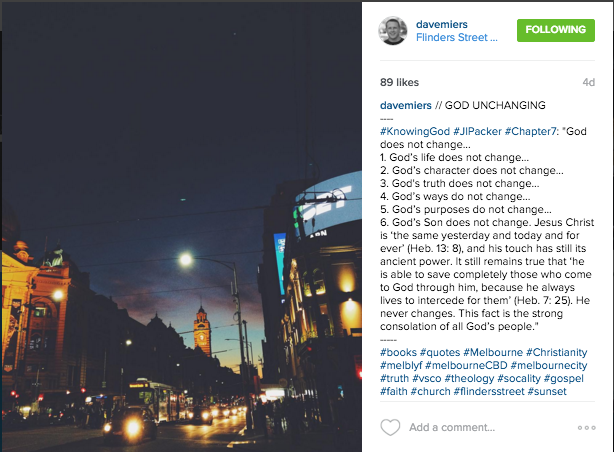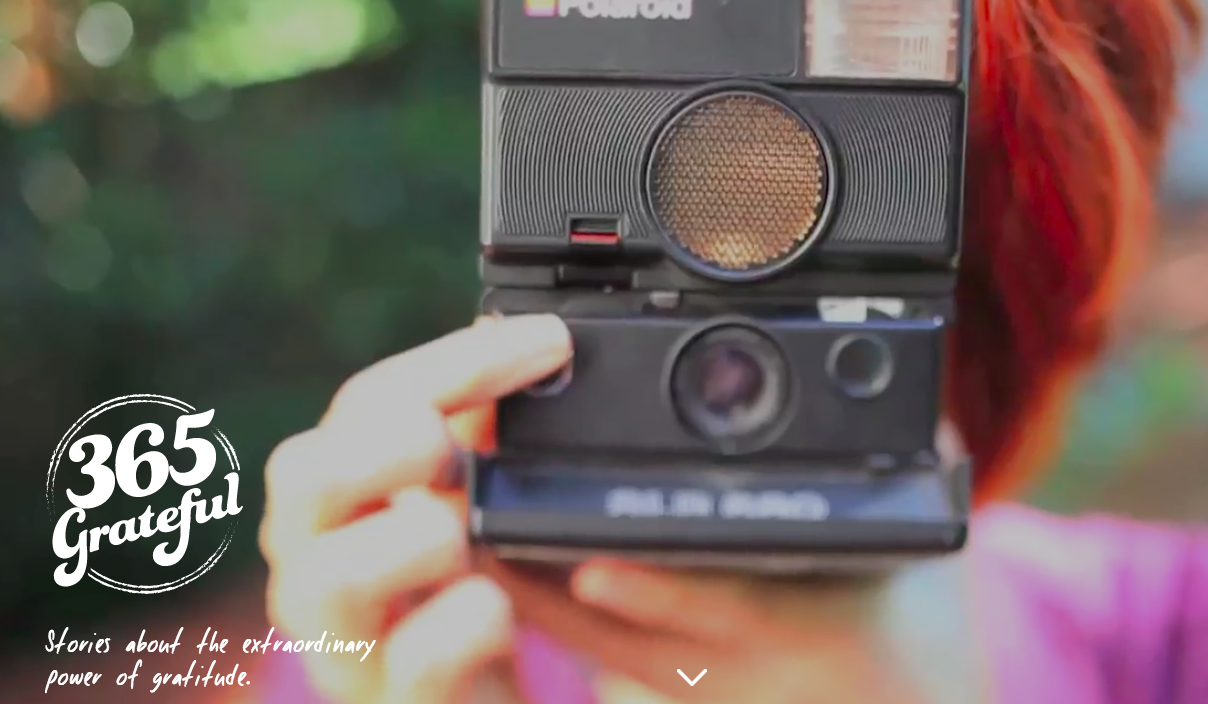Would Jesus use social media?
If he did, what would he post?
If we’re followers of Jesus how should we think about social media? How do we keep tabs on how teenagers are using stuff like Instagram, Snapchat when we can’t even figure Facebook out?
These are, of course, the questions of our age.
I’m going to answer them a little here by making a certain assumption, that I’ll put up front. I’ve written plenty about this elsewhere (including how people who are leaders in churches might help the people they lead think about this stuff). I’m going to assume that we, people, as God’s image bearers, are God’s social media. That God’s people have a track record, beginning in the Old Testament, of using communication mediums to tell people about God, while avoiding the dangers that come from deadly communication mediums (like idol statues). We’re naive when we assume mediums don’t matter, but we’re over-correcting when we assume mediums that can become dangerous shouldn’t be used. Creation itself was meant to reveal God’s divine character and invisible qualities, the fact that we turn God’s creation into images of things he made, and worship those images, isn’t a problem with creation as a communication medium, but with us (see Romans 1:19-25).
There’s been plenty in the news the last few weeks about how people are using Instagram — from models swearing off social media, specifically the ‘crafting’ of an image that isn’t real on social media, to models swearing at their social media followers for not doling out enough likes on their posts.
“I have created an image of myself that I think others feel is unattainable, others look at as a role model, others look at as some type of ‘perfect human’.” — Essena O’Neill
If you believe what teenagers tell you about social media, Instagram is where the action is. It’s where people are crafting an image of themselves for others to see, and where people are finding images to follow — to worship — and to be shaped by. Snapchat, another image based service, is equally interesting, and equally ignored by Christians who talk about this stuff.
“Snapchat is where we can really be ourselves while being attached to our social identity. Without the constant social pressure of a follower count or Facebook friends, I am not constantly having these random people shoved in front of me. Instead, Snapchat is a somewhat intimate network of friends who I don’t care if they see me at a party having fun… If I don’t get any likes on my Instagram photo or Facebook post within 15 minutes you can sure bet I’ll delete it. Snapchat isn’t like that at all and really focuses on creating the Story of a day in your life, not some filtered/altered/handpicked highlight. It’s the real you.” — Andrew Watts, A Teenager’s View on Social Media
One of the interesting things about Instagram and Snapchat, apart from their use of images, is that they don’t rely on the same algorithmic sorting of information that Facebook and Google use. They provide a stream of content unfiltered by an algorithm; except of course for the photos, which are ‘filtered’ first in terms of what images are shared and not shared, and ‘filtered’ in the sense of being made to look good via tweaking, often tweaking via the application of a pre-designed filter which applies an algorithm of effects to a photo. This content comes from people who people have chosen to follow, or, in the case of Instagram, content sorted via hashtags or location from newest to oldest.
Perhaps this shift to these new platforms, by our younger generations, is built on a cynicism about algorithms, and the desire to really be in control of one’s media experience.
“…a squirrel dying in your front yard may be more relevant to your interests right now than people dying in Africa.” — Facebook founder Mark Zuckerberg, describing the Facebook newsfeed philosophy
I think this, in itself, is interesting because it means the reason we’re not confronted with pictures we don’t want to see — or the reason we’re confronted with pictures that cause us outrage — is not down to an algorithm that controls what you see, but is down to your choice in who to follow.
Anyway. Here are ten tips I’m giving to a bunch of teenagers for how to use image-driven social media — mostly not thinking about Facebook — as Christians.
1. Remember that you are God’s Social Media
We were made in God’s image to represent him in his world. That’s what images of God in the ancient world did. We, from the beginning, were meant to be God’s media. That was true for Adam, true for Israel, and is true for us in Christ. God should be made known through us, and through our connection with him and with others. We’re his representatives in his world, re-created in Christ to re-represent him.
You show that you are a letter from Christ, the result of our ministry, written not with ink but with the Spirit of the living God, not on tablets of stone but on tablets of human hearts.
— 2 CORINTHIANS 3:3
And we all, who with unveiled faces contemplate the Lord’s glory, are being transformed into his image with ever-increasing glory, which comes from the Lord, who is the Spirit.
— 2 CORINTHIANS 3:18
Therefore, if anyone is in Christ, the new creation has come: The old has gone, the new is here!
— 2 CORINTHIANS 5:17
We are therefore Christ’s ambassadors, as though God were making his appeal through us. We implore you on Christ’s behalf: Be reconciled to God.
— 2 CORINTHIANS 5:20
2. Don’t worship, or become an image of, anything else.
Our human tendency is to make ourselves images of anything but God. Our first inclination is to want to be images of ourselves, rather than dependant on God. To be the pattern for life. That’s basically what Essena admitted above in the words “I have created an image of myself”… in replacing God, we actually end up worshipping ourselves, or some dead thing — an idol — and we become what we worship, and we become disconnected from the one who gave us a pattern for life.
All the stuff we know about media and the brain confirms what the Bible says about idolatry. Our brains are shaped by the things we consume, including the mediums we use to consume things. There’s a saying that’s popular in a particular branch of media studies that looks at the effects of different communication mediums being introduced into society: “We shape our tools, and then, they shape us.” Add this to the line that sums up much of what we know about how our brains take shape “neurons that fire together, wire together” and we find that it’s not just the things we present in our media, but the mediums themselves, that shape us. It’s true that we become what we worship — the objects we fix our sight, imagination, and desires on.
… Idols are silver and gold, made by human hands. They have mouths, but cannot speak, eyes, but cannot see… Those who make them will be like them, and so will all who trust in them.
— PSALM 115:4-5, 8
Do not conform to the pattern of this world, but be transformed by the renewing of your mind.
— ROMANS 12:2
3. Share Jesus.
If we are communication mediums for whatever we worship, then the way we use mediums will reflect who we are, and communicate what it is we worship. If someone looked at your social media accounts, who would they say you worship? Our job isn’t to try to make images of God, or of things we worship, but to point people to God via our lives, and via what God has made (and how we use it). God’s handiwork — the stuff he makes, including the people he remakes in Christ — should point people to him, which for us means our ‘good works’ that he has prepared for us to do, as a subset of his creative acts, should show who we are “in Christ Jesus.”
For since the creation of the world God’s invisible qualities—his eternal power and divine nature—have been clearly seen, being understood from what has been made, so that people are without excuse.
— ROMANS 1:20
For we are God’s handiwork, created in Christ Jesus to do good works, which God prepared in advance for us to do.
— EPHESIANS 2:10
4. You must decrease. He must increase
Our human tendency is to want to be at the centre. It’s the experience of being creatures whose lives are projections of our own subjectivity — our thoughts, our imagination, our desires, are projected through our actions. The Gospel calls us to re-centre ourselves, and our lives, and our thoughts about others to make Jesus the subject, and the centre of reality, and to point people to him, not ourselves. I like the way John the Baptist describes this experience as he is confronted with the truth about who Jesus is.
He must become greater; I must become less
— JOHN 3:30
This runs counter to the way people in our world use social media to project either ourselves as the ultimate subject of reality, or to present our idols as the subject of our lives and worship.
Do nothing out of selfish ambition or vain conceit. Rather, in humility value others above yourselves, not looking to your own interests but each of you to the interests of the others
— PHILIPPIANS 2:3-4
In a practical sense, this changes the sort of stuff we tend to want to share/project into the world so that we’re not crafting an image of ourselves, but seeking to serve others (which will always, in some sense, involve sharing something of yourself). This Venn Diagram from Wait But Why’s post on 7 Ways to Be Insufferable on Facebook pretty much nails it. Instagram and Snapchat work a little differently to Facebook, but the question is who are your photos pointing to? You? Or Jesus? Who are they serving? You and the image you craft as you ‘worship’? Or Jesus, and others?

5. Don’t Fight.
Nothing looks worse on social media than you arguing with, and grumbling about, other Christians. We’re actually called to be God’s image bearing ‘social media’ together, in and through our relationships with each other as we, together, find our identity in Christ. And arguing and grumbling undermines and so destroys this ‘image’… When we want to fight, Paul’s answer is to “have the same mindset as Christ Jesus,” whose approach to status and power is described in Philippians 2, where Paul follows this instruction, and his description of Jesus’ example, with:
Do everything without grumbling or arguing, so that you may become blameless and pure, “children of God without fault in a warped and crooked generation.” Then you will shine among them like stars in the sky as you hold firmly to the word of life.
— PHILIPPIANS 2:14-16
We’ll stand out on social media as ‘shining stars’ if we make social media a place where we’re not living for our own name, or glory, but for the sake of others — and where we demonstrate this by not fighting or grumbling.
6. Online is great. Offline is greater.
Heaps of people, mostly old people, are super-negative about social media because it’s disembodied. You’re talking at people through a screen. You stare at screens rather than ‘doing life’ in a very present sense. The place you are physically put is definitely part of reality when you are a finite creature, but we’re called to hold our physical reality in balance with the eternal spiritual reality we’ve become part of. As a Christian, you’re connected to the people in your immediate vicinity, but, paradoxically, you’re also connected with God, by the Holy Spirit, and ‘in Christ’ — and through this connection you’re, in a real sense, connected to every other Christian who has ever lived, and who currently lives. Virtual connections are a pointer to this reality, and a great substitute for the physical presence we will enjoy for eternity. If this is a little too abstract — virtual, online, connections are also a way to overcome some of the limits of being finite, in order to have real and significant relationships. They’re a brilliant new way to make space and time less of an impediment for relationships with people, they become dangerous if they stop us ever being really present with the people in our lives, or if we never anticipate coming face to face with those we ‘commune’ or ‘communicate’ with via these channels.
In the old days, like the Bible days, people wrote letters to overcome the limits space and time place on our communication with others. John wrote letters like this — and they’re obviously valuable because they’re in the Bible and have continued circulating for almost 2,000 years since. He saw the value of letters, but placed a greater relational value on presence, and his letters anticipated this presence.
I have much to write to you, but I do not want to use paper and ink. Instead, I hope to visit you and talk with you face to face, so that our joy may be complete.
— 2 JOHN 1:12
What are some ways we can use social media to anticipate or invite face to face contact, even if they’re global relationships? One way is to look forward to, or anticipate, a shared eternity through a shared connection with Jesus.
7. God’s Word is the best media.
Everything God made is, in a sense, media. In that it reveals something about him to us. It helps bridge the divide between creator and creature, or writer and audience. God is most clearly revealed in Jesus, who is most clearly revealed, for us, in the Bible, which is all about him.
Whatever media practices, or social media practices, we cultivate will be best, or at least will relate best to our created purpose, if we start with media practices centred on God’s media. Not our own. And these practices are, at least significantly, to occur within our ‘social network’ as God’s people — we’re not called to plug in the headphones and focus on God as individuals as though we’re an island.
Check this out. This is a fairly famous passage from Colossians. It definitely already has a corporate sense in that the ‘dwelling among you richly’ all relies on things we do together. But our tendency is to think this is speaking particularly to us as individuals. That it’s a set of instructions for personal godliness.
“Let the message of Christ dwell among you richly as you teach and admonish one another with all wisdom through psalms, hymns, and songs from the Spirit, singing to God with gratitude in your hearts. And whatever you do, whether in word or deed, do it all in the name of the Lord Jesus, giving thanks to God the Father through him.”
— COLOSSIANS 3:16-17
But this is a problem, at least a little, because we don’t use youse. Everything about these verses is corporate. Let’s play it again, while breaking all sorts of rules — well, one — about english.
“Let the message of Christ dwell among YOUSE richly as YOUSE teach and admonish one another with all wisdom through psalms, hymns, and songs from the Spirit, singing to God with gratitude in your hearts. And whatever YOUSE do, whether in word or deed, do it all in the name of the Lord Jesus, giving thanks to God the Father through him.”
We need to focus on the message of Christ, via multimedia practices, in relationship. God’s media is media we’re to use socially. And this should both come before we pick up ‘social media’ from the world, and it might inform how we use social media. Not in that it will make us boring regurgitators of random Bible verses, but because this message of Christ should soak everything we do and say as Christians.
How can social media help you, and your ‘network’ have the message of Christ dwell among you richly?
8. Prayer is the best social networking
Prayer is how we express that we have become part of the ultimate social network — that we have, in a profound way, been united with the God who made the universe. That we have been brought into the eternal, self-giving, community of the Trinity, and invited to communicate with God, our Father, in a way that is enabled by Son and Spirit. The prayer of Jesus in John 17 is an incredibly profound demonstration of prayer, and explanation of the privilege we now have as pray-ers.
“My prayer is not for them alone. I pray also for those who will believe in me through their message, that all of them may be one, Father, just as you are in me and I am in you. May they also be in us so that the world may believe that you have sent me.”
— JOHN 17:20-21
We are members of this incredible social network, and with that, comes the privilege of communicating in this network — but also the responsibility to pray for those in every other one of our networks. There is not a person you are connected with on social media who you are not instructed to pray for. We’re called to pray for our enemies (Matthew 5:44), for our fellow Christians (which Paul models in Ephesians 1:15-18, and then instructs us to do in Ephesians 6:18-20).
How might social media help you to pray for the people in your life?
9. Use your new imagination to share Jesus on new mediums
There are plenty of pitfalls with adopting new mediums without thinking. But we’ve been adopted into a new ‘network’ in a way that gives us great freedom to act as people with renewed minds, who are being transformed by God’s media. We are creatures of imagination, and we’re invited to use these in creating and participating in media, as God’s media. Giving people a bunch of rules and regulations for how to be ‘good’ social media users is a guaranteed way to make people un-imaginative and inauthentic on social media. It’s a pitfall most social media experts fall into. The formula for success is to be generous, interesting and authentic. So. How might we use snapchat or instagram? Be creative. Tell stories. Throw attention onto others. Celebrate.
I had a great coffee with my mate Dave Miers this week and picked his brain about how he — very intentionally — uses check-ins and hashtags to share bits of what he believes with strangers on Instagram. He’s even had someone come to his church because they started following him on Instagram because he uses relevant local hashtags, and tags photos in excellent local places, while sharing snippets of what he’s thinking or reading in God’s word, or in books he’s reading in those cafes.

10. Tell real(ly thankful) stories
This follows the above. People love stories. We are creatures who live by stories as we create stories. Social media thrives on stories. Most people craft stories that are boring and self-seeking, or tap into some story that we want to imagine ourselves living. I love stuff like the 365 Grateful project that encourages people to cultivate gratitude.

And I reckon gratitude is fantastic. But I think we, as Christians, are called to appropriately direct our gratitude beyond the great people in our lives, and past the ‘universe’ which conspires to give us great experiences — and we’re called to cultivate thankfulness to the God who makes excellent media, who has re-created us to be actors in his story. That’s how we give God’s world its purpose back — how we stop falling into the trap of living for ourselves, or making the mistake of worshipping God’s great media instead of God as the imaginative creator of great media.
For everything God created is good, and nothing is to be rejected if it is received with thanksgiving, because it is consecrated by the word of God and prayer.
— 1 TIMOTHY 4:4-5
We cultivate thankfulness in the same way that people are trying to practice gratitude. By expressing it. In real ways. By being thankful for the big things, and small things, God has made. And by using social media to do that — to be thankful for what God has given us, in this world and in Jesus, and by being thankful for the people he has given us as part of our networks. That’s a natural way to soak your life in the message of Christ, and to be God’s workmanship, rather than building your own image via the things you share online.















































